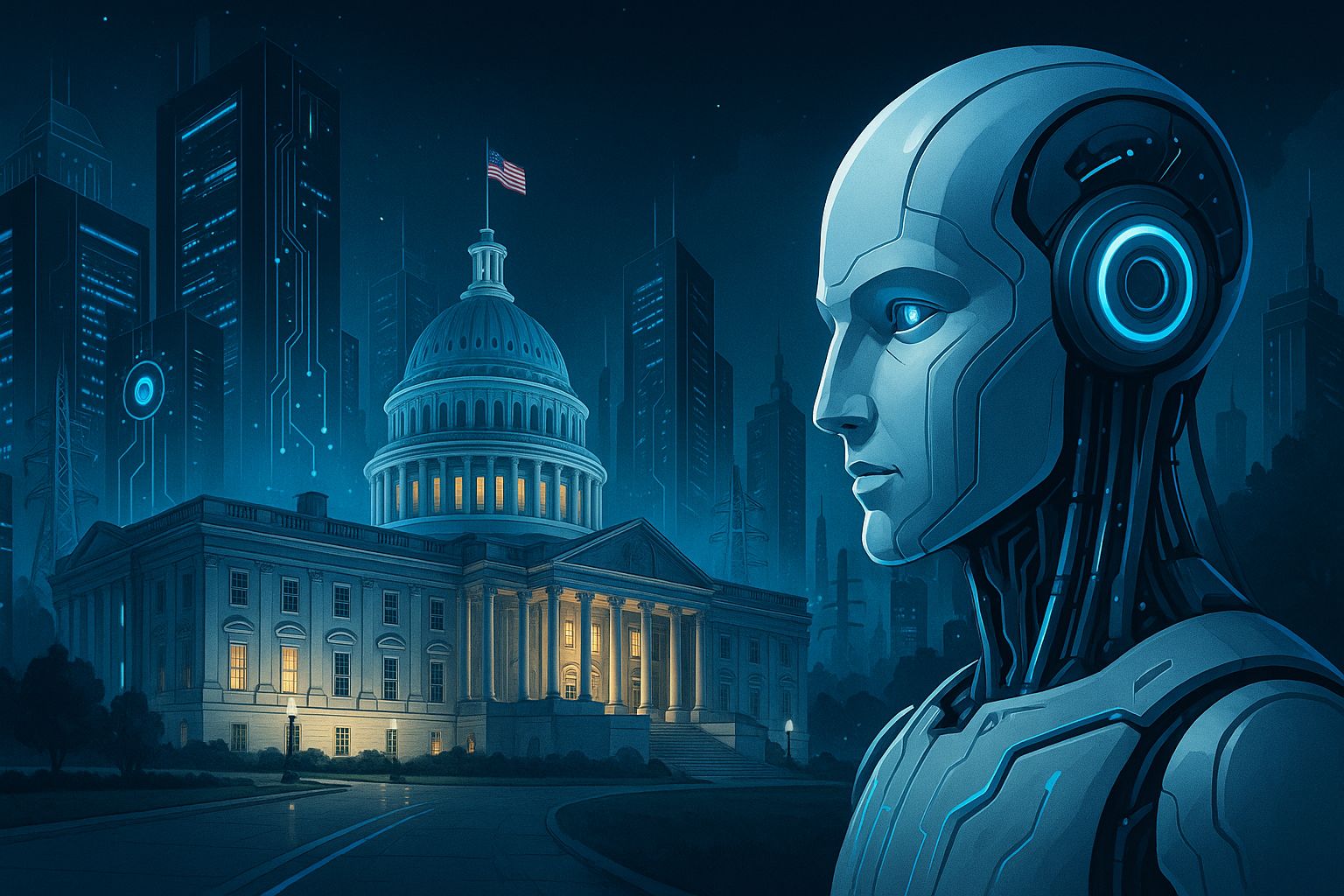- The Midas Report
- Posts
- White House Readies Major AI Action Plan
White House Readies Major AI Action Plan
3 min read.

The White House is preparing to unveil a sweeping AI Action Plan aimed at weaving artificial intelligence deeper into federal systems. Set to debut on July 23, the initiative includes several executive orders and policy shifts designed to streamline data center permitting, expand energy infrastructure, and guide federal adoption of AI across agencies.
This is not about showmanship. It reflects a strategic pivot to embed AI where it matters most, inside public infrastructure, policy development, and national security.
What the Plan Actually Covers
The heart of the strategy is threefold.
First, the executive branch will make it easier to build data centers. Expect federal land use, unified permitting for water and grid connections, and targeted land availability through agencies like the Energy and Defense departments.
Second, the government will actively advance US AI exports. Commerce and other federal departments will deploy full stack AI packages abroad to support allied countries and counter reliance on foreign systems.
Third, funding will be restricted for states with restrictive AI laws. The FCC will assess which local regulations conflict with federal objectives. This is designed to prevent a patchwork of rules that could stall national AI adoption.
Behind the scenes, the Office of Science and Technology Policy is leading a national call for public comment and stakeholder input. The final plan is expected to shape U.S. AI posture amid global competition.
Why This Is a Big Deal
This marks a purposeful shift from lab driven pilots to systemic change.
AI is being treated not as a buzzword but as infrastructure, vital for government operations, federal services, and geopolitical strategy. The move is supported by high level champions including White House AI czar David Sacks and senior figures at OSTP.
This also signals a political shift toward less federal oversight and more growth orientation. The Trump administration is winding back Biden era guardrails to open doors for aggressive AI expansion in both public and private sectors.
What Could Go Wrong
Centralizing AI strategy is powerful, but it carries risks.
Scaling data center buildout will test utilities, zoning and environmental frameworks. Without careful oversight, supply chains could strain.
Blocking funds to states with strong AI safeguards could trigger legal challenges. This move is controversial and may face constitutional scrutiny around federalism.
And the emphasis on export and deregulation may collide with civil rights, worker protections and privacy. Watchdog groups are already raising concerns over bias and unchecked AI deployment.
Why Builders and Founders Should Pay Attention
This shift drastically shifts the incentive landscape.
If you build infrastructure, cloud or data center tools, this may unlock funding and simplify expansion approvals.
If you build AI software designed for government, healthcare or security use cases this could be your open door to procurement pipelines.
If you build compliance, explainability or federated learning tools, now is the time to plug into federal policy conversations.
And if you build services that prioritize neutrality or anti bias, expect renewed demand from agencies looking for trusted AI partners.
Your Next Play
Follow the plan’s release on July 23 and study the accompanying executive orders. Identify alignment points, whether around data centre infrastructure, export frameworks, agency adoption, or regulatory clarity.
Connect with federal working groups or engage in upcoming public comment windows. Now is the time to shape standards and procurement requirements before they turn into mandates.
This is not just the government embracing AI. It is a signal to the market that AI is now a public utility and the foundation stone for service, governance, and economic growth in the next decade.
Engage early, build strategically, and position your offer where government is now leaning.
Sources
https://www.reuters.com/legal/litigation/white-house-unveil-plan-push-us-ai-abroad-crack-down-restrictive-rules-document-2025-07-22
https://www.reuteom/legal/government/trump-plans-executive-orders-power-ai-growth-race-with-china-2025-06-27
https://www.whitehouse.gov/briefings-statements/2025/02/public-comment-invited-on-artificial-intelligence-action-plan/